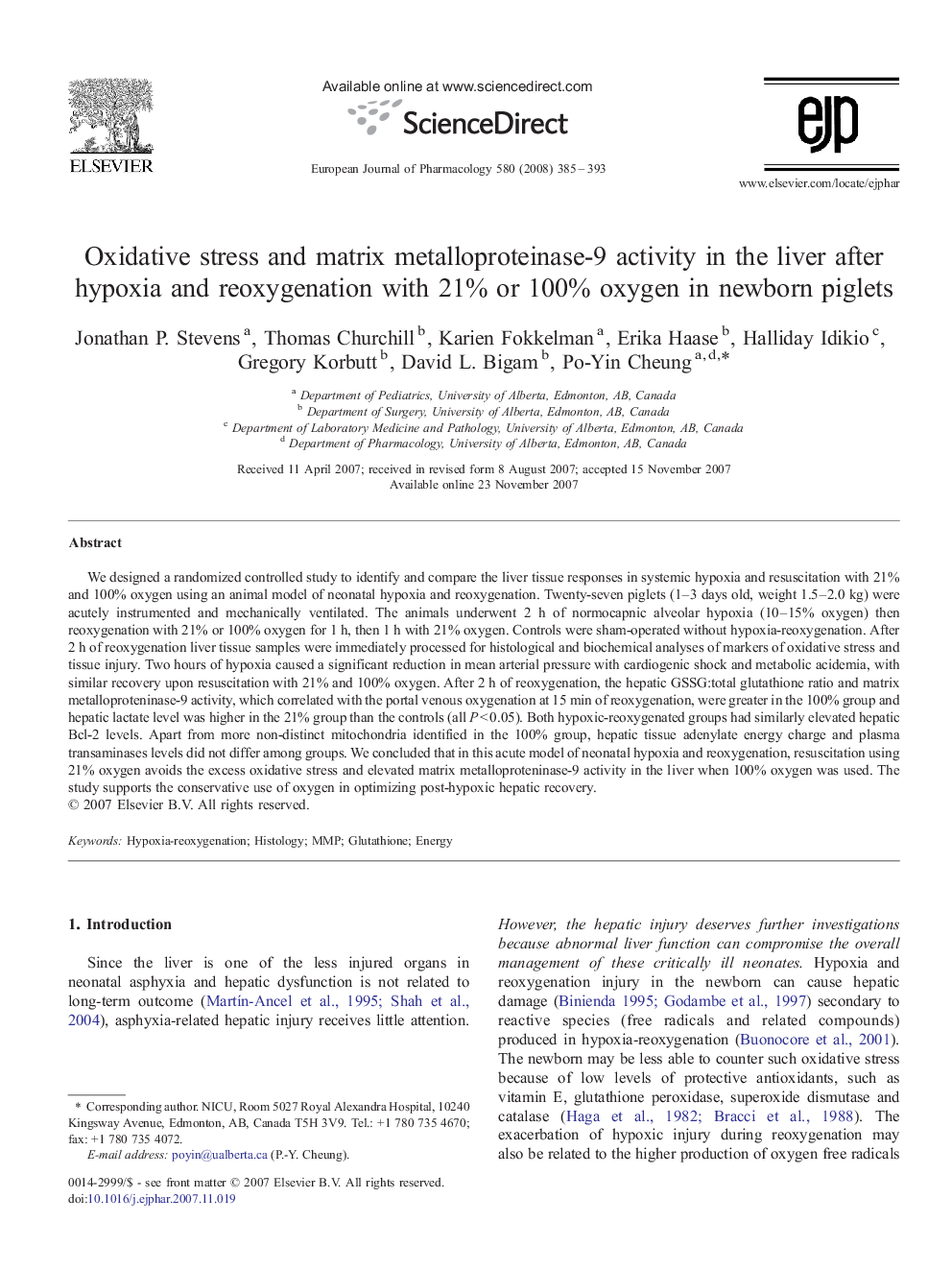| Article ID | Journal | Published Year | Pages | File Type |
|---|---|---|---|---|
| 5830653 | European Journal of Pharmacology | 2008 | 9 Pages |
We designed a randomized controlled study to identify and compare the liver tissue responses in systemic hypoxia and resuscitation with 21% and 100% oxygen using an animal model of neonatal hypoxia and reoxygenation. Twenty-seven piglets (1-3Â days old, weight 1.5-2.0Â kg) were acutely instrumented and mechanically ventilated. The animals underwent 2Â h of normocapnic alveolar hypoxia (10-15% oxygen) then reoxygenation with 21% or 100% oxygen for 1Â h, then 1Â h with 21% oxygen. Controls were sham-operated without hypoxia-reoxygenation. After 2Â h of reoxygenation liver tissue samples were immediately processed for histological and biochemical analyses of markers of oxidative stress and tissue injury. Two hours of hypoxia caused a significant reduction in mean arterial pressure with cardiogenic shock and metabolic acidemia, with similar recovery upon resuscitation with 21% and 100% oxygen. After 2Â h of reoxygenation, the hepatic GSSG:total glutathione ratio and matrix metalloproteninase-9 activity, which correlated with the portal venous oxygenation at 15Â min of reoxygenation, were greater in the 100% group and hepatic lactate level was higher in the 21% group than the controls (all PÂ <Â 0.05). Both hypoxic-reoxygenated groups had similarly elevated hepatic Bcl-2 levels. Apart from more non-distinct mitochondria identified in the 100% group, hepatic tissue adenylate energy charge and plasma transaminases levels did not differ among groups. We concluded that in this acute model of neonatal hypoxia and reoxygenation, resuscitation using 21% oxygen avoids the excess oxidative stress and elevated matrix metalloproteninase-9 activity in the liver when 100% oxygen was used. The study supports the conservative use of oxygen in optimizing post-hypoxic hepatic recovery.
